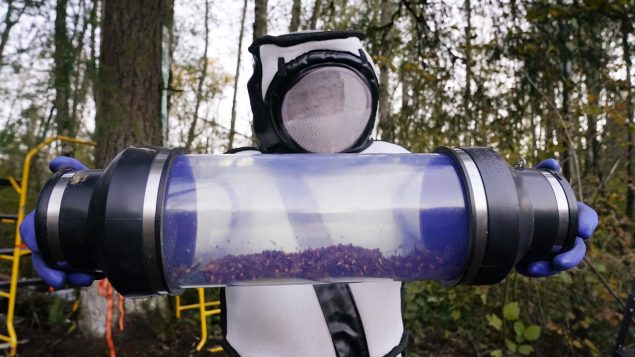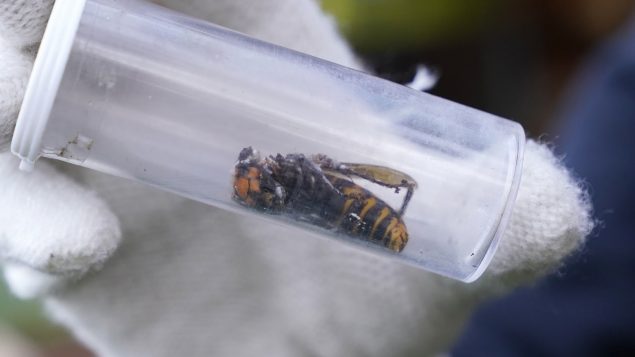British Columbia, Washington state and U.S. federal agencies are collaborating on plans this year to track, trap and eradicate any Asian giant hornets that they find.
The B.C. government says that this year, the Asian giant hornet surveillance program will include traps in areas where there were previous findings and continued outreach and networking with beekeepers within the province, according to a provincial press release on Wednesday,
The work will continue last year’s efforts with comprehensive surveys in Nanaimo and the Cowichan Valley on Vancouver Island and from White Rock to Aldergrove in the Fraser Valley.
“Reports from the public have been crucial for locating Asian giant hornets,” a statement from the B.C. government said. “Last year, half of the confirmed reports in Washington state and all of the confirmed reports in British Columbia were from members of the public.”
In a joint press conference with Washington state officials, Paul van Westendorp, a B.C. provincial apiculturist, said that six hornets were found and collected in Fraser Valley through public reporting last year.
In August of 2019, Asian giant hornets and a nest were spotted in Nanaimo on Vancouver Island. Experts were able to track down the nest and destroy it.
Van Westendorp said since that time that there were no sightings or collection of any giant hornets on Vancouver Island. He added that if there are no reports again this year then it could be declared free of Asian giant hornets.
The giant hornets have been mainly found in Fraser Valley, Vancouver Island and in Washington State.

Sven Spichiger, Washington State Department of Agriculture managing entomologist, displays a canister of Asian giant hornets vacuumed from a nest in a tree behind him Saturday, Oct. 24, 2020, in Blaine, Wash. (AP Photo/Elaine Thompson)
The Asian giant hornets are an invasive species that feed on pollinating insects, including bees. They can grow up to five centimeters long.
Last year, agents from the Washington State Department of Agriculture (WSDA) caught a pair of live Asian giant hornets and attached tiny beacons to them so they could track them to their nest, which ended up containing about 200 queens.
This year, Washington state’s plans include an emphasis on public outreach, reporting and trapping in addition to the agency’s trapping.
According to the press release, the WSDA will use orange juice and rice cooking wine in traps.
Citizens scientists can also use orange juice or brown sugar based bait.
With files from CBC News (Karin Larsen)







For reasons beyond our control, and for an undetermined period of time, our comment section is now closed. However, our social networks remain open to your contributions.